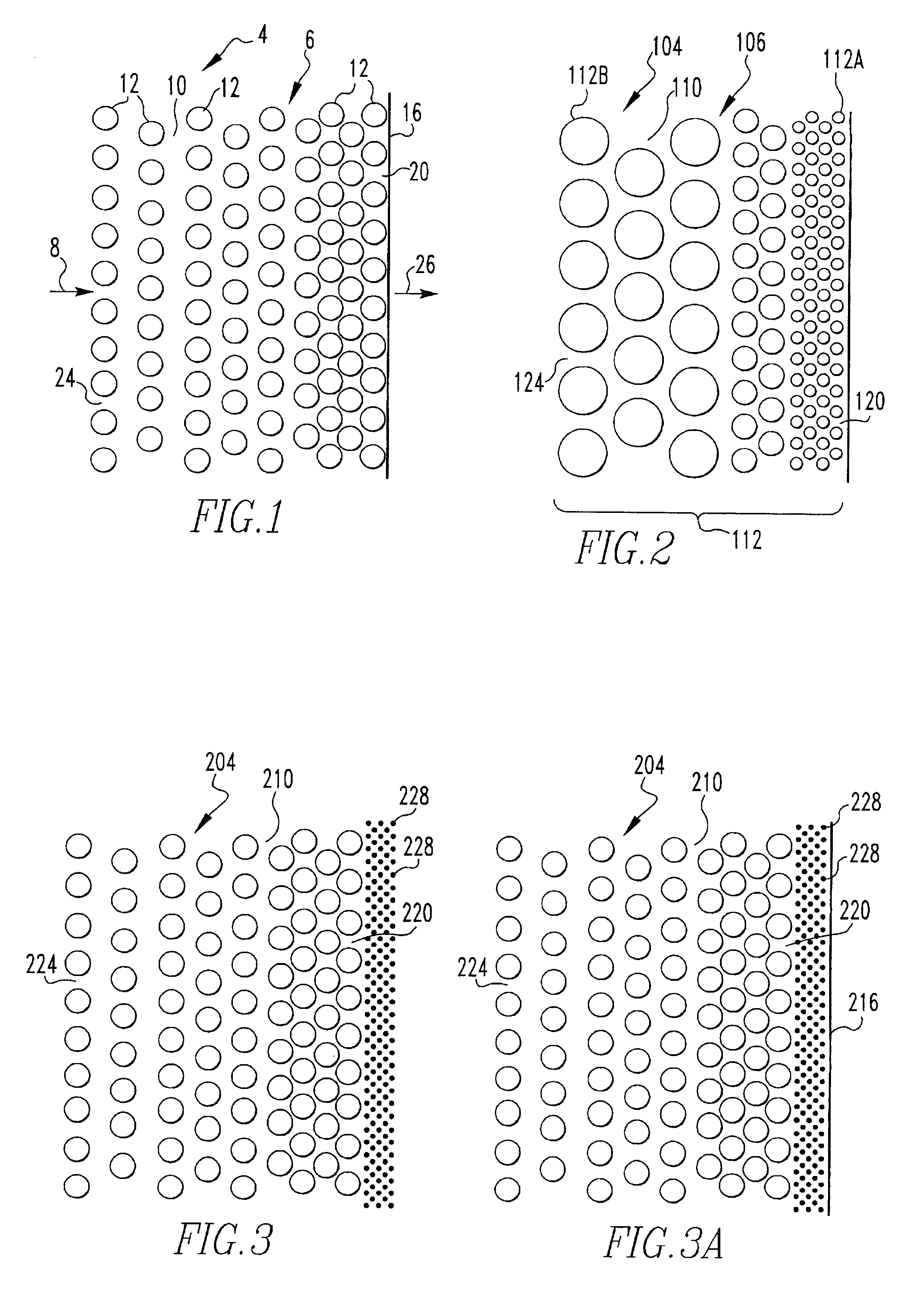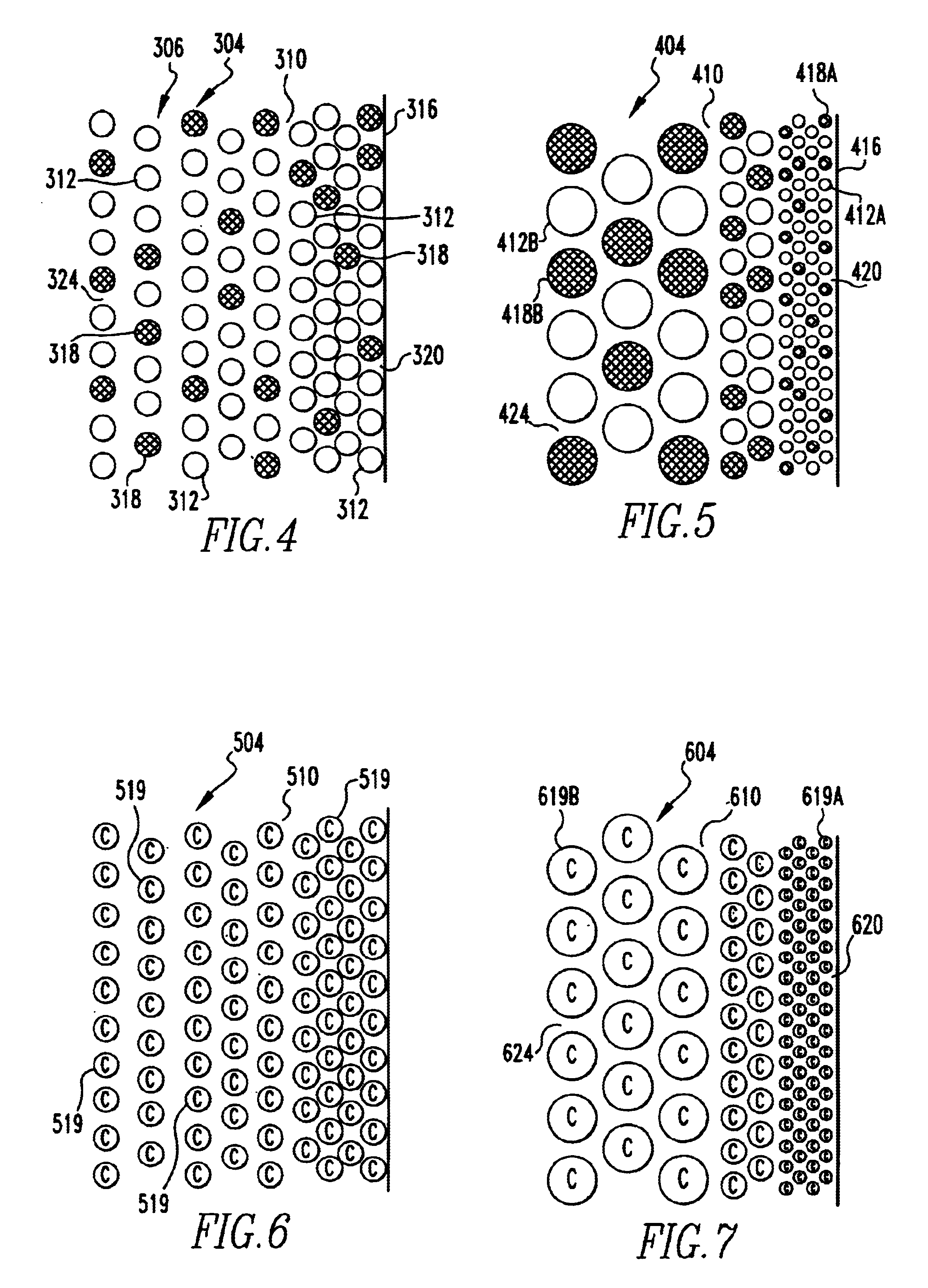Metal gas separation membrane
a metal gas and separation membrane technology, applied in the field of metal gas separation membranes, can solve the problems of low porosity, low porosity of membranes, and low stability of membranes, and achieve the effects of low porosity, high hydrogen selectivity, and low porosity
- Summary
- Abstract
- Description
- Claims
- Application Information
AI Technical Summary
Benefits of technology
Problems solved by technology
Method used
Image
Examples
first embodiment
[0051]a metal gas separation membrane 4 in accordance with the present invention is indicated generally in FIG. 1. The metal gas separation membrane 4 is advantageously configured to separate hydrogen gas from a gas stream 8. As will be set forth more fully below, the metal gas separation membrane 4 is also advantageously configured to be highly selective to hydrogen, meaning that it permits the permeation of hydrogen therethrough and resists the permeation of other gases. The metal gas separation membrane 4 further advantageously permits relatively high flow rates of hydrogen therethrough.
[0052]The metal gas separation membrane 4 includes a transmission member 6 that can be of numerous shapes, such as plates, tubes, honeycomb configurations, and other such shapes. The transmission member 6 is depicted schematically in cross-section FIG. 1, and it includes a porous body 10 made out of a plurality of metal particles 12 compressed and bonded together and a metal coating 16 on the poro...
second embodiment
[0067]a metal gas separation membrane 104 in accordance with the present invention is indicated generally in FIG. 2. The metal gas separation membrane 104 is similar to the metal gas separation membrane 4 except that the metal gas separation membrane 104 includes a transmission member 106 having a porous body 110 in which the graded porosity thereof is achieved in a different fashion than that of the porous body 10. More specifically, the metal particles 112 of the porous body 110 vary in size from relatively finer metal particles 112A at the first surface 120 to relatively coarser metal particles 112B at the second surface 124.
[0068]By way of example, the relatively finer metal particles 112A may be in the form of fibers of a size in the range of about 25 to 100 nanometers in diameter and 112B may be in the form of fibers of a size in the range of about <1 to 50 microns in diameter and <10 millimeters in length. Particles of other sizes and shapes may, however, be used without depa...
third embodiment
[0070]a metal gas separation membrane 204 in accordance with the present invention is indicated generally in FIG. 3. The metal gas separation membrane 204 is similar to the metal gas separation membrane 4, except that the metal gas separation membrane 204 includes a layer of ceramic particles 228 instead of employing the metal coating 16. The ceramic particles 228 are either of a physically smaller size than any of the metal particles of the porous body 210, or the ceramic particles 228 are compacted to a greater degree than any of the metal particles such that the layer of ceramic particles 228 has an even lower porosity than any other region of the porous body 210. The layer of ceramic particles 228 thus defines the first surface 220 of the porous body 210, with the porosity at the first surface 220 being less than the porosity at the second surface 224 of the porous body 210.
[0071]The layer of ceramic particles 228 thus advantageously provides high hydrogen selectivity in the por...
PUM
| Property | Measurement | Unit |
|---|---|---|
| Concentration | aaaaa | aaaaa |
| Size | aaaaa | aaaaa |
| Permeability | aaaaa | aaaaa |
Abstract
Description
Claims
Application Information
 Login to View More
Login to View More - R&D
- Intellectual Property
- Life Sciences
- Materials
- Tech Scout
- Unparalleled Data Quality
- Higher Quality Content
- 60% Fewer Hallucinations
Browse by: Latest US Patents, China's latest patents, Technical Efficacy Thesaurus, Application Domain, Technology Topic, Popular Technical Reports.
© 2025 PatSnap. All rights reserved.Legal|Privacy policy|Modern Slavery Act Transparency Statement|Sitemap|About US| Contact US: help@patsnap.com



